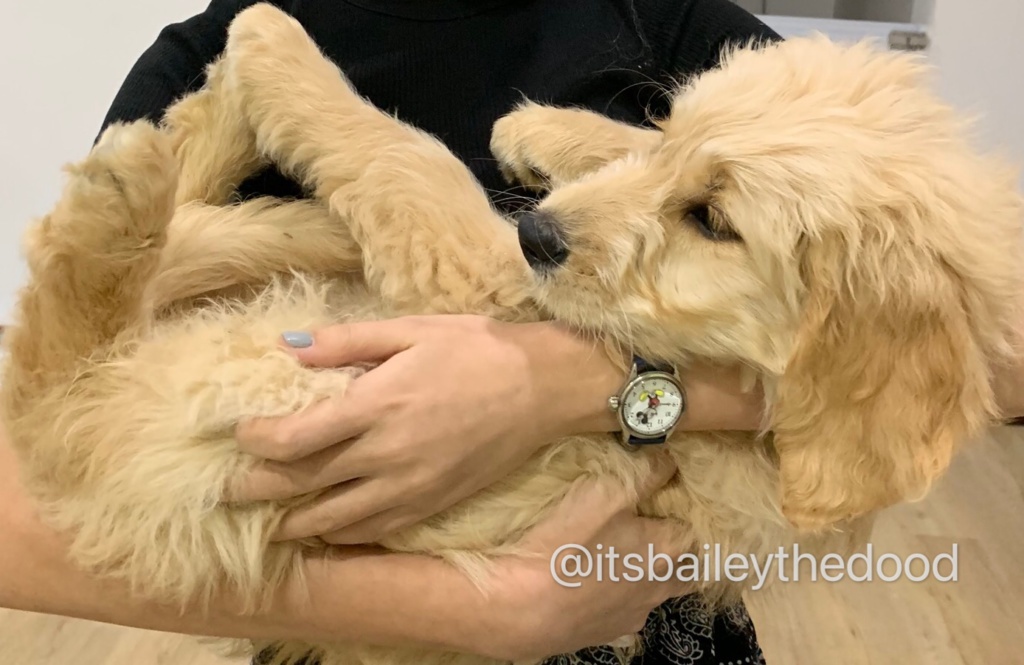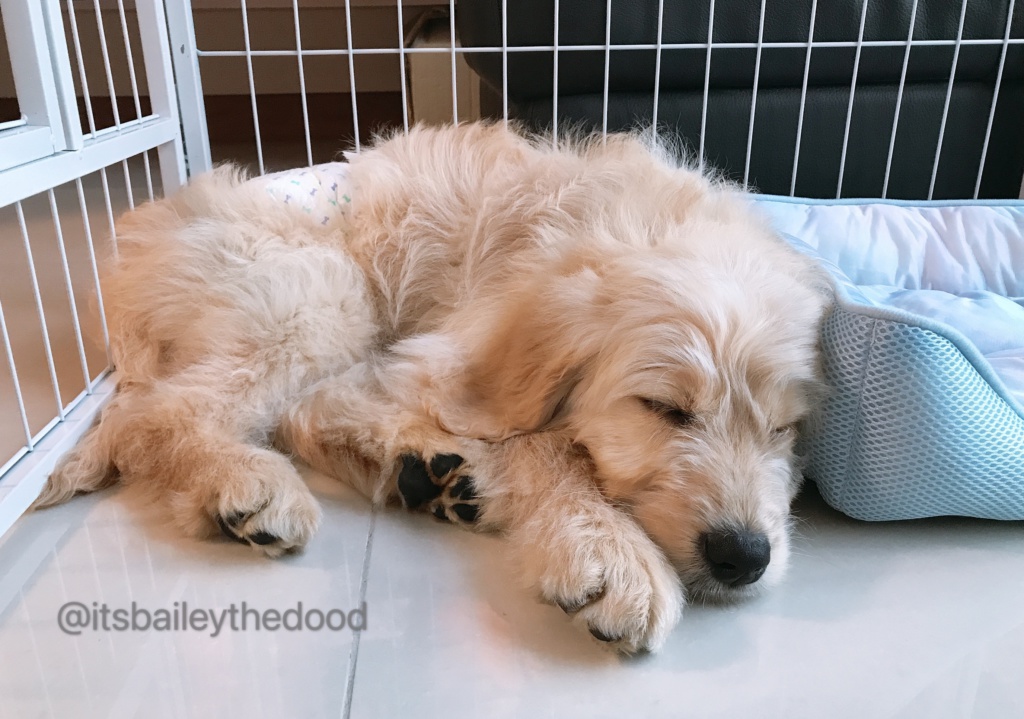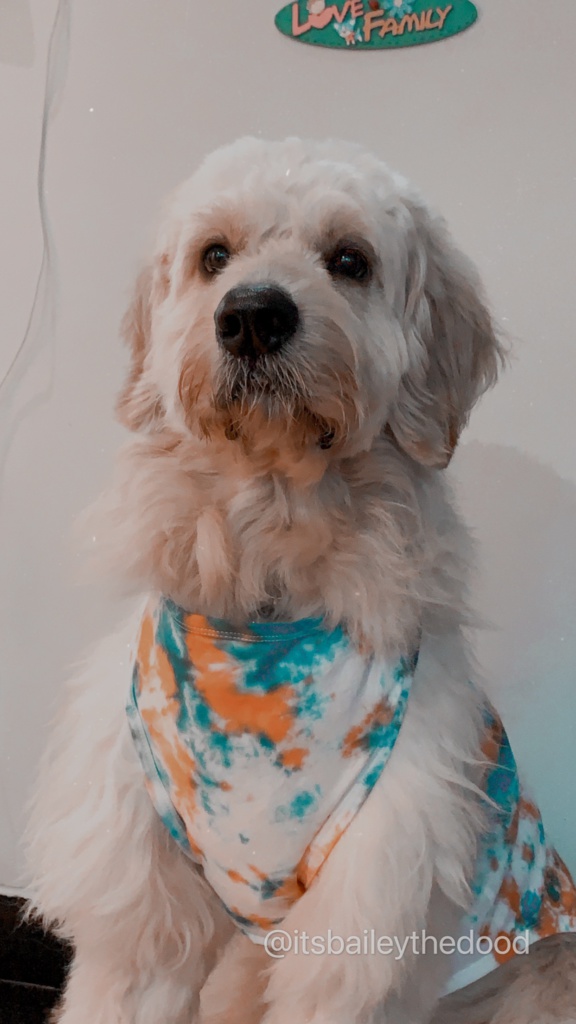How I came about:
My big sister had been asking for a dog since furever , but mama was never convinced enough to get one for her, as she doubted if my big sister truly understood the amount of responsibilities and commitment of having one.
It was on the 31st May 2019, when papa and mama spotted a post listed by a pet store featuring the LAST goldendoodle from Ireland available for deposit. It was the innocent, puppy eyes and wavy fluffy golden fur that caught their eyes.
It was on the next morning, where my mama suddenly asked:
“So how? Did you ask about the puppy?”
At that point in time, papa and mama had agreed that my big sister was old enough to care for a dog, and it was probably time to let big sister learn to be more responsible.
My big sister had researched A TON and watched vlogs and tips on Youtube about goldendoodles, until she was finally convinced that they were well-prepared and it was all going to be okay when they finally receive me. It was all so surreal, the fact that she was finally going to become a dog owner!
And that was how my journey with my hooman slaves started!
About me:
The pet store had told my hoomans that I would be estimated 14kg because I am a F2 goldendoodle, and I would definitely be smaller than a goldie. They also said I was hypoallergenic and would not drool.
Currently, I weigh 30kg, and am bigger than many other goldies! I drool like crazy and I shed like it’s snowing at home everyday. Until today, my hoomans look back and think: how on earth did an estimated 14kg dog grow up to 30kg? It is more than double the estimated weight!

The first time meeting my hoomans:

When I first arrived in Singapore, I was already big enough for my hooman to cradle in her arms. my hoomans were shocked at how big I grew within the span of a few months!
When I was roaming freely in the pet store together with my other siblings, my hoomans could tell that my siblings and I have very different fur textures varying from straight to wavy even though we were all siblings.
I was reserved when I first met my hoomans, I crawled under a table, away from the rest and did not interact much. They guessed I was probably having a jet-lag.
My first night home:

During my first night home, my hoomans fed me apples and they realised that I love apples! My papa had to sleep on the couch beside my crate that night because I had separation anxiety, and would whine everytime my hoomans were not within my sight. Even though my hoomans thought that I was so attention seeking , they could not help thinking how cute it was for me to whine for them to stay with me.
I vividly remember, during the first few nights, my hoomans had to wake up to clean my poo as I would start whining loudly whenever I soiled myself. My papa even had to wash my bed (which was full of shit) at 3am.
It was only after a month or so, that I developed a condition called: Giardia. Giardia is a microscopic parasite that causes the diarrheal illness known as Giardiasis. I had non-stop diarrhea for days, and my hoomans brought me to the vet.
The vet accessed me, and asked my hoomans where they got me from. When they said I was from a pet farm in ireland, the vet concluded that I had probably picked up the parasite from the breeder, since it’s a farm. The vet then said that Giardia can be passed from dogs to humans, so my hoomans had to wash their hands everytime they clean after me and whenever I lick them. The vet also told my hoomans that I will definitely be above 14kg by looking at the size of my paws.
I was also diagnosed with kennel cough and had various hot spots on my belly area. Let’s be honest: being a first time pet owner, this was probably the worst nightmare. This was not the type of experience someone would want as a first time dog owner, seeing your dog become sick only a month after bringing it home, having multiple diarrhea episodes every few hours and having to stay up all night to clean.
My hoomans stocked up on pee pads. However, I was not pee pad trained yet so I did not know how to pee or poo on the pee pads. Papa got me some diapers but it was a diaper buying gone-wrong experience since he got a size too small and it could not ‘hold’ the poop because of the design of the diaper, which had a hole at the tail, which allowed my poo to come out. My hoomans had to staple the diaper hole, which unfortunately did not work.
With all these happening at once, my hoomans suddenly felt that despite all the research they have done and tips they were given, everything was so hectic and a huge mess even though it had been a month or so since they got me.
It felt like they were not capable of raising a dog at all.
To make matters worse, my papa had to go for an overseas business trip and it was just me, my mama and my 2 sisters at home when I had Giardia, kennel cough and hot spots all at once. There was no doubt my mama was going crazy cleaning my shit day and night, with my sisters having to go to school during the day. My hoomans were at a loss and really were at the brink of giving me to someone who would be able to look after me better.
Thank god, they held on, and here I am today!
My hoomans do look back and think about what a journey I went through. Yes, I had a rough start, having to go through all these ordeals. But my hoomans are certainly glad it is over now, and that I am now growing healthily and well.
Nevertheless, my hoomans love me very much, and there is absolutely no doubt that I am actually one of the biggest blessings that happened to them. Even though my mama never liked dogs, I am now her favourite as she baby-talks to me and is pretty much obsessed with me. Big sister also kept her promise to look after me and care for me.
Even though I am big in size, I am actually a gentle giant at heart.

Throughout this whole journey, my hoomans had learnt that it is important to have more patience with our fur friends and it does take time for our little fur friends to settle down. Looking back, my hoomans do regret one thing: not carrying me when I was smaller and alot lighter. Given my current weight, only papa can carry me.
It is indeed part and parcel of the process to go through rough patches throughout the puppy stages. To all new dog owners out there experiencing a similar experience: It will all be over soon! Fighting!




